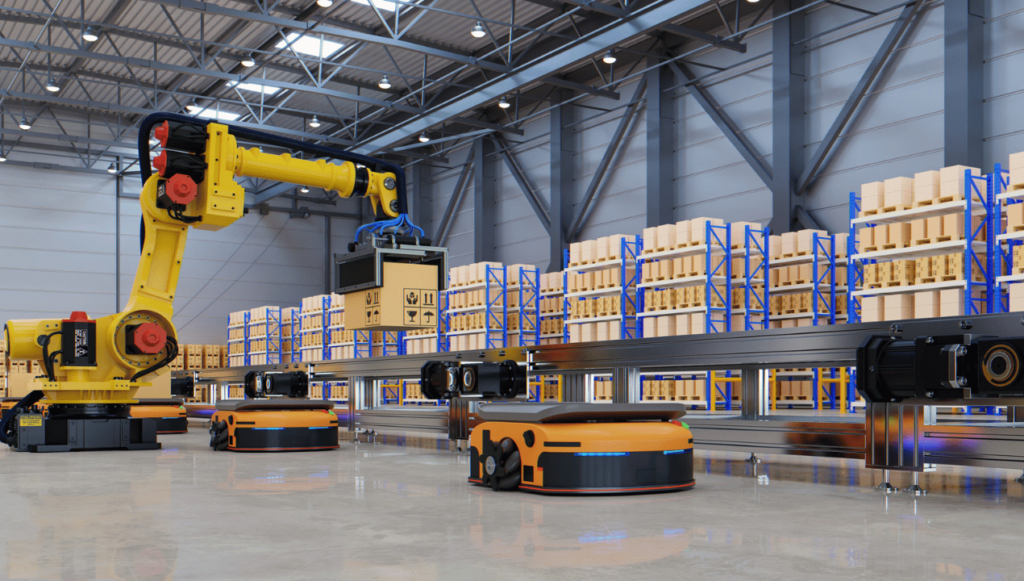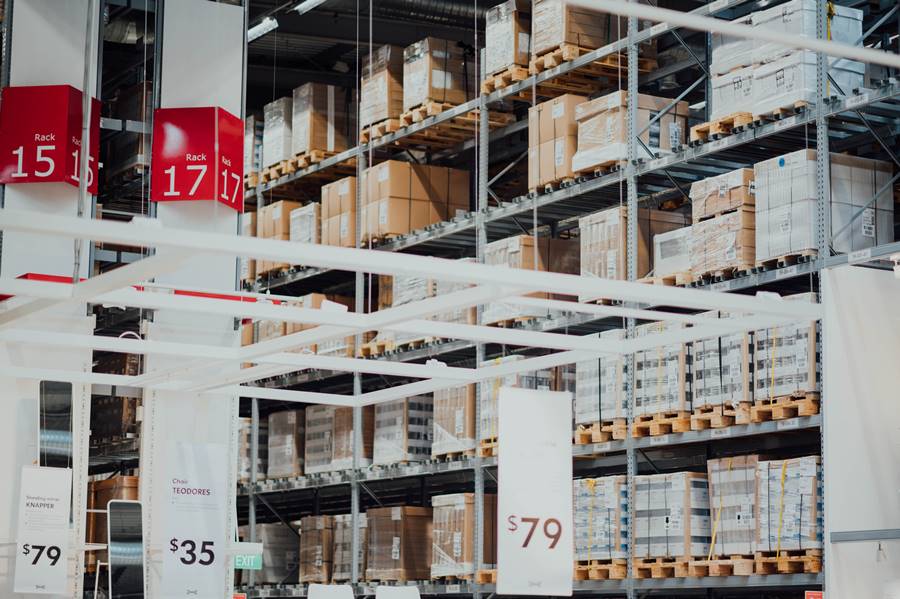The warehousing and logistics sectors are undergoing a major transformation thanks to advancements in technology, particularly in artificial intelligence, the Internet of Things, and big data. These smart technologies are revolutionizing how goods are tracked and stored, ultimately saving time for teams, optimizing investments, and enhancing the end-user experience. In this article, we will delve into the leading technological advancements shaping the future of warehousing, highlighting key innovations in logistics and trends influencing the transportation industry.
8 Emerging Technology Trends for Warehousing Adoption
To gain insights into the technologies that will dominate the next 2-5 years, it’s crucial to examine those already making waves in the industry. According to Statista, warehouse teams are increasingly relying on innovations such as barcode scanners, labels, readers, connected smartphones, RFID tags, sensors, and more.
Currently, the market’s focus is primarily on innovations geared towards intelligent tracking and management. Real-time access to comprehensive information about all processes is crucial for preventing accidents, anticipating risks, and facilitating the transition towards smart warehouses.
However, these priorities are expected to shift. Once the automation and innovation of warehouse management’s monitoring aspect become commonplace, companies will seek new areas for advancement. Let’s explore the technologies relevant to warehouse companies now and in the next 3-5 years.

Robotics in Warehousing: Trends & Innovations
Reducing operational costs remains a top priority for warehouse companies, and minimizing human resources costs is a long-term and effective approach to achieve this goal. Robotics is emerging as a frontrunner in warehouse automation, with companies increasingly integrating automated vehicles. Continue reading to explore the cutting-edge technologies driving the future of warehousing, alongside leading logistics innovations and trends shaping the transportation industry.
Automated Guided Vehicles
Vehicles equipped with automated guidance systems (along with carts) are emerging as primary contenders for handling goods transportation within warehouses and across nearby territory. AGV vehicles rely on geospatial data and safety scanners to ensure secure transportation of goods throughout the warehouse.
This technology has been successfully implemented by 2XL, a Belgian warehouse company that developed custom robotic vehicles to optimize warehouse logistics. By doing so, they achieved significant reductions in costs and time, alongside a decrease in human errors.
Mobile Robots in Warehousing
Autonomous robots also offer navigation capabilities within warehouses, but their operating mechanism differs. They utilize sensors and maps instead of pre-defined routes to maneuver through the warehouse. This system enhances their versatility while potentially reducing predictability. This approach is particularly well-suited for larger warehouses with a higher likelihood of unforeseen variables. Solutions like TagSurvey already exist, demonstrating the ability to scan warehouse environments in real-time, detect obstacles, and navigate effectively, aligning with the future trends and innovations in warehousing.
Drone Deliveries
Over the past 4-5 years, drones have transitioned from science fiction to practical tools in warehousing and logistics. Amazon’s introduction of deliverable drones, Octocopters, in 2013 sparked widespread adoption of the concept by other providers, including DHL.
The technology behind deep optical view enables real-time analysis of landscapes, facilitating efficient drone delivery. Consequently, drones possess the capability to deliver products rapidly, even to remote areas, while minimizing fuel consumption and human supervision. Looking ahead to the next 2-3 years, we can anticipate the emergence of fully autonomous aerial models.
Voice Tasking Technology
Technology’s potential to replace human workers extends beyond drivers. Companies are increasingly turning to voice tasking technology as a substitute for traditional operators. These intelligent systems generate voice commands automatically, leveraging data-driven insights to reduce human error and miscommunication.
Voice tasking technologies have existed since the early 2000s, but advancements in natural language processing and conversational AI have elevated them to new heights. Today, voice tasking technology extends beyond product picking, finding applications in various areas:
- Distribution center management: Streamlining replenishment, transport, transfer, distribution, receiving, and product documentation;
- In-store management: Voice assistants can generate commands for picking, stock management, and monitoring;
- Repairs and maintenance: Voice-talking software can guide teams through technical difficulties.
Order Fulfillment Optimization Technology
Effective order fulfillment relies on seamless collaboration among multiple logistics specialists. Drivers, on-site workers, operators, and customer managers require access to the most up-to-date information. Manual coordination becomes increasingly challenging, particularly as customer expectations grow.
To address this, businesses are adopting innovative platforms that automate and oversee payments, order management, fulfillment, and customer interactions, leveraging warehousing technologies. These management systems are integrated with shipping solutions responsible for executing operations. This integration typically occurs in two primary ways:
- Order Management System (OMS): Tracks customer requests and assigns orders. OMS keeps team members informed about new tasks and provides valuable analytics.
- Warehouse Management System (WMS): Manages order distribution, focusing on technical aspects like transportation, route and time planning, risk assessment, and real-time reporting.
Cloud Computing in Warehousing
With the rise of innovative analytical systems and real-time tracking, data volumes are expanding rapidly. Continuously scaling in-house servers can be cost-prohibitive for many companies due to hardware, space, and specialized personnel expenses. This is why numerous logistics providers opt to outsource computing to third-party vendors. By leveraging the infrastructure of major tech companies, they can share resources and reduce costs. Read on to uncover the most promising technologies shaping the future of warehousing, along with top logistics innovations and trends driving the transportation industry.
Benefits of Cloud Computing for Warehousing
- Scalability: Unlike in-house resources, cloud computing provides warehouse companies with the flexibility to adjust storage capacity and CPU resources as needed. This allows for adaptation to fluctuating workloads, seasonal demands, and budget constraints.
- Reduced Responsibility: By outsourcing infrastructure management, companies can shift their focus from security, compatibility, and hardware maintenance to companies can focus.
- Innovation: Cloud infrastructure often includes tools for artificial intelligence, the Internet of Things, and big data, fostering innovation.
On-Demand Approach in Transportation Industry Technologies: Warehousing Trends & Innovations
Today, even large retailers often lack the resources to accommodate extensive warehousing. As investments in digital marketing and technology increase, physical investments are becoming less critical. The warehousing industry is poised for an “uberization” trend, with large providers offering long-term subscriptions to their warehousing space. This eliminates the need for companies to manage warehouses in-house.
This presents a significant opportunity for warehousing companies, enabling them to focus on building scalable infrastructures and attracting B2B clients. For businesses seeking to offload their warehousing operations, it provides a valuable outsourcing option.
Major Obstacles to Adopting Emerging Technologies
While innovation in warehousing offers substantial opportunities, it also presents challenges. There’s a reason why the logistics and warehousing sectors have lagged behind other major industries in terms of digital transformation, despite the use of emerging technologies that drive warehousing and logistics.
1 Security Concerns in Warehousing Technologies
Gathering vast amounts of data related to movements, customer information, creating intelligent analytics with strategic information about partners, and connecting stakeholders can create a treasure trove of sensitive data for hackers. Without a dedicated security department, companies risk data breaches, potentially damaging their reputation and revenues.
2 Human Resource Shortages
To successfully adopt innovation in logistics and warehousing, providers need partnerships with reliable technical teams possessing expertise in relevant technologies and experience in the field. Logistics and warehousing operate under specific standards and regulations that require specialized knowledge.
3 Ethical Considerations in Warehousing Technologies
Many logistics innovations rely on robotics and automation, which can lead to job displacement, a concern for the public. Governments may intervene in the shift towards automation, or companies might face negative PR.
4 Knowledge Gaps
Company management needs a clear understanding of the key stages involved in digital transformation in transportation. Embracing innovation requires long-term investment and a realistic outlook, as technology adoption may not yield immediate results. Knowing when to invest in technology and when to prioritize other areas is a critical competency for digital transformation.
Technologies Driving Warehousing: Conclusion
Technological transformation is no longer optional in the logistics sector. Recognizing this, organizations must embrace technology adoption promptly to facilitate the transition to intelligent warehouses. Embracing these advancements is crucial for companies to outpace competitors and provide superior customer experiences. However, digital transformation is a long-term process, underscoring the importance of proactive planning to build sustainable systems and achieve success.
